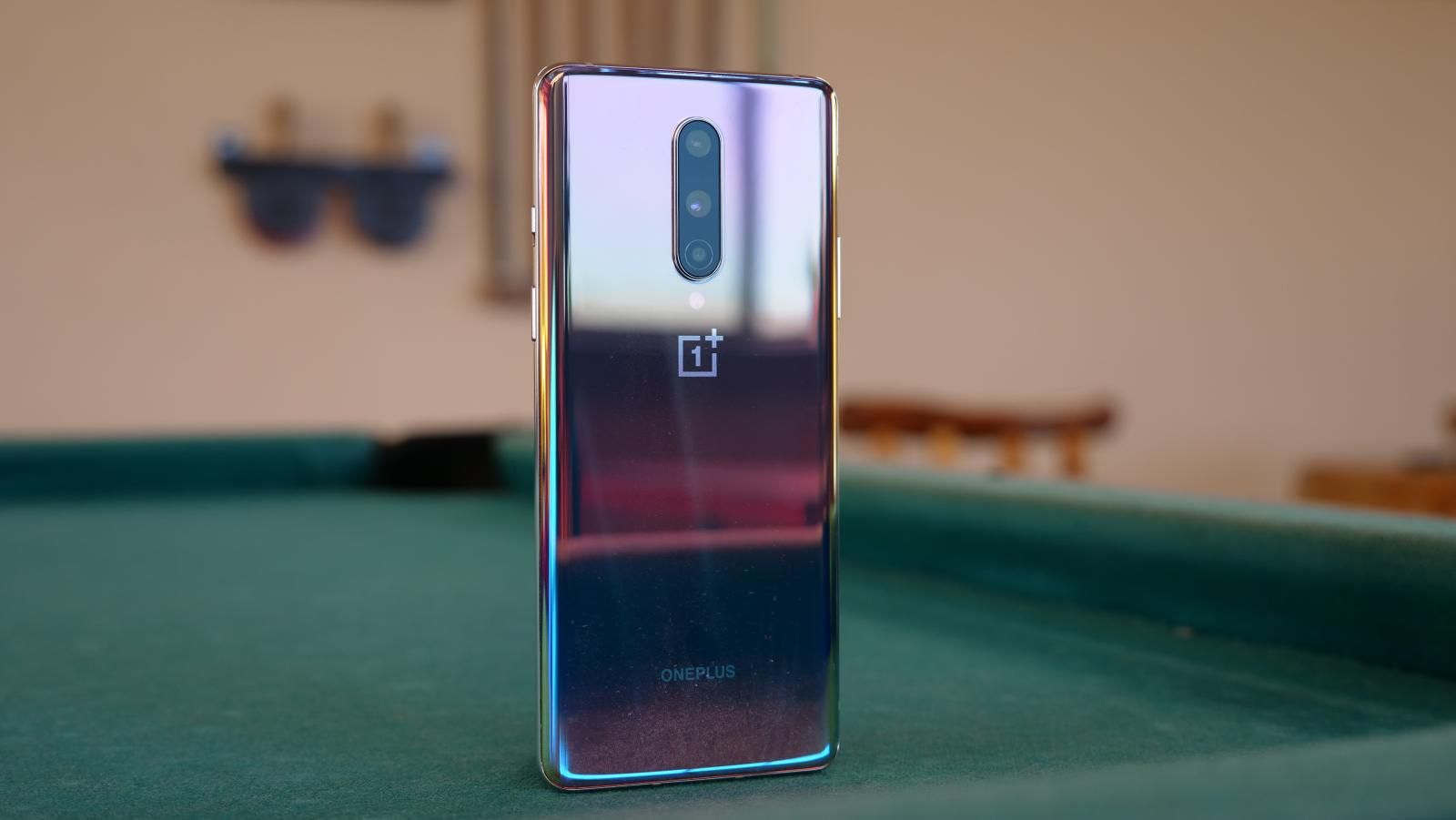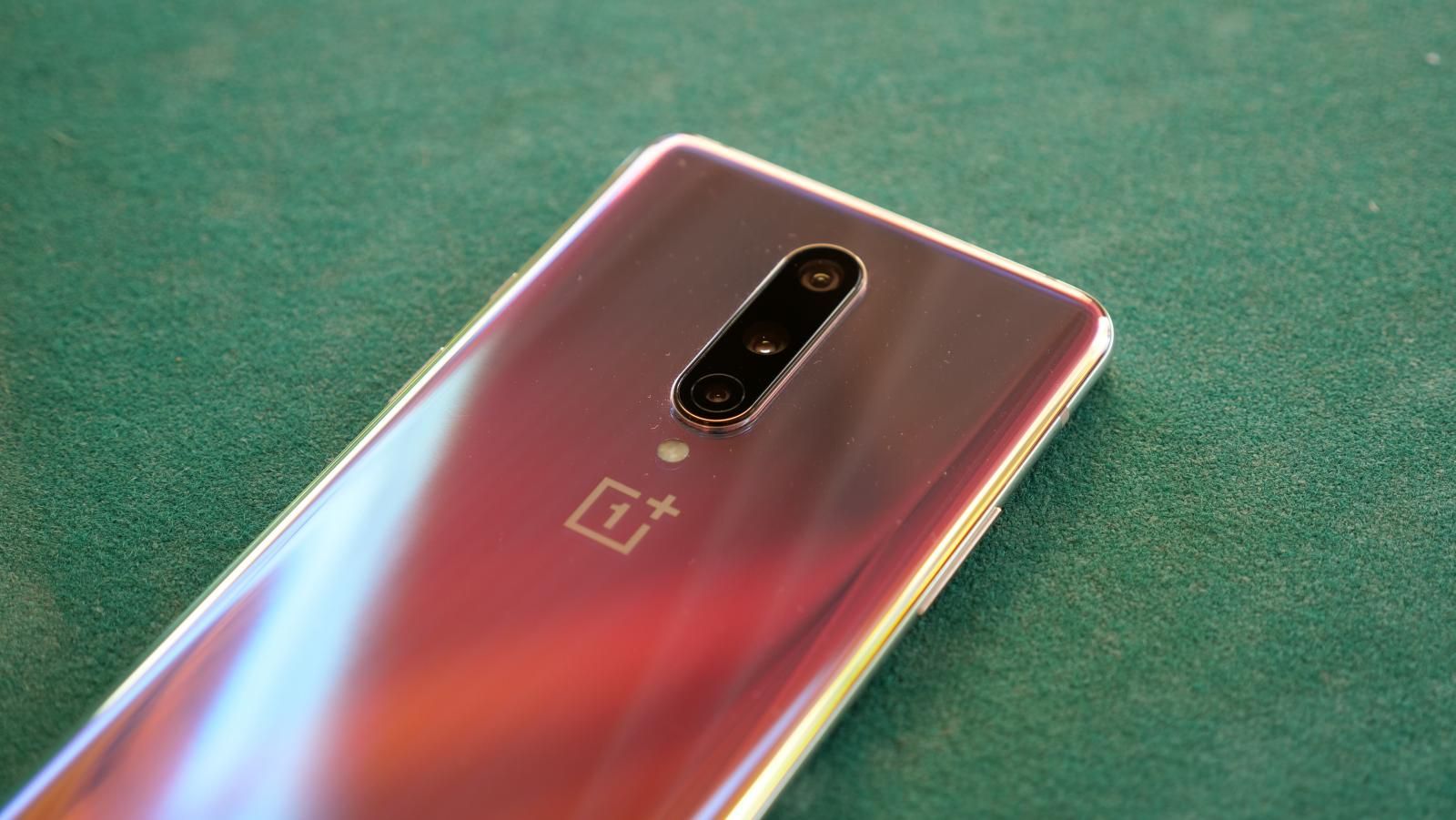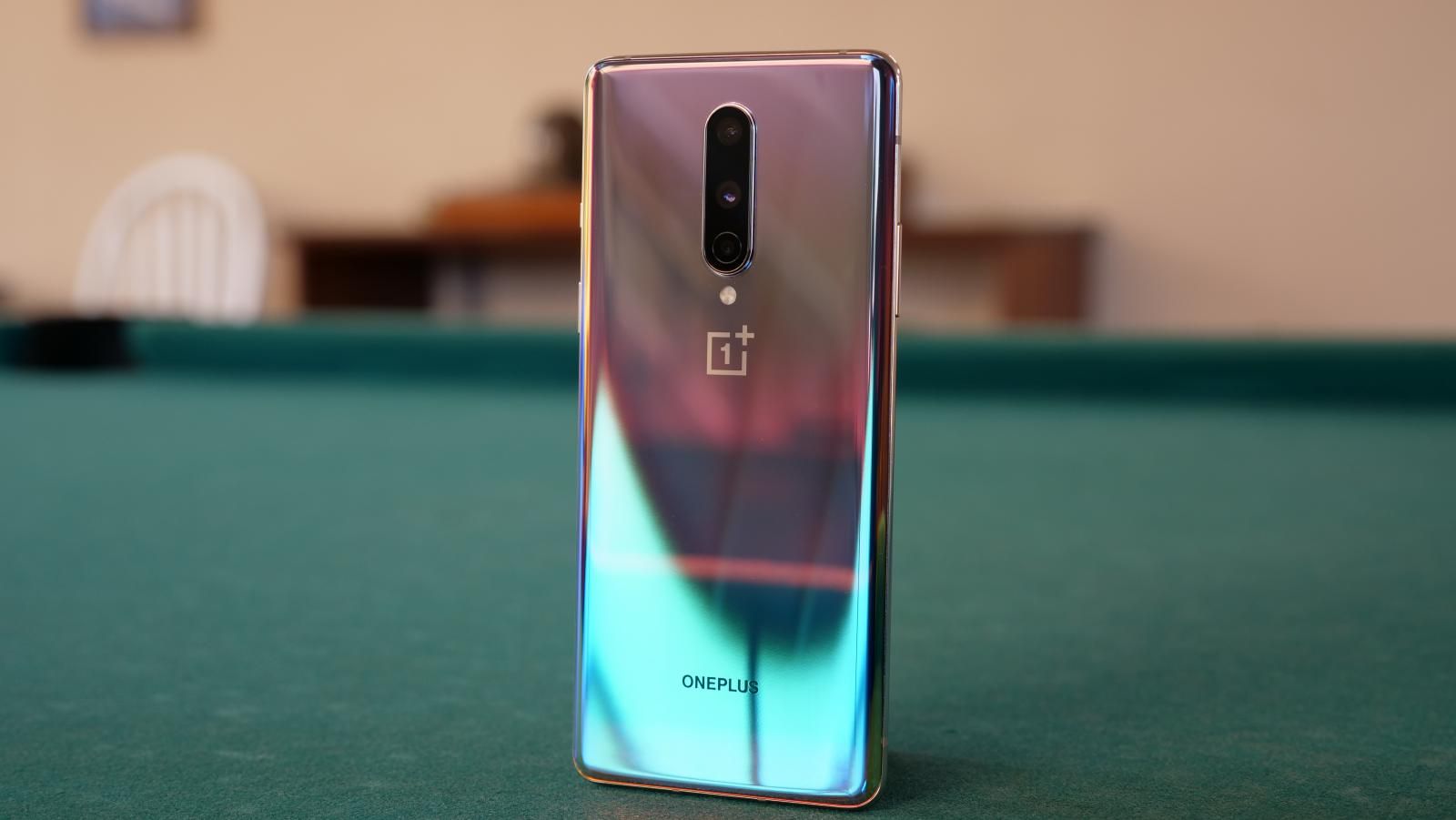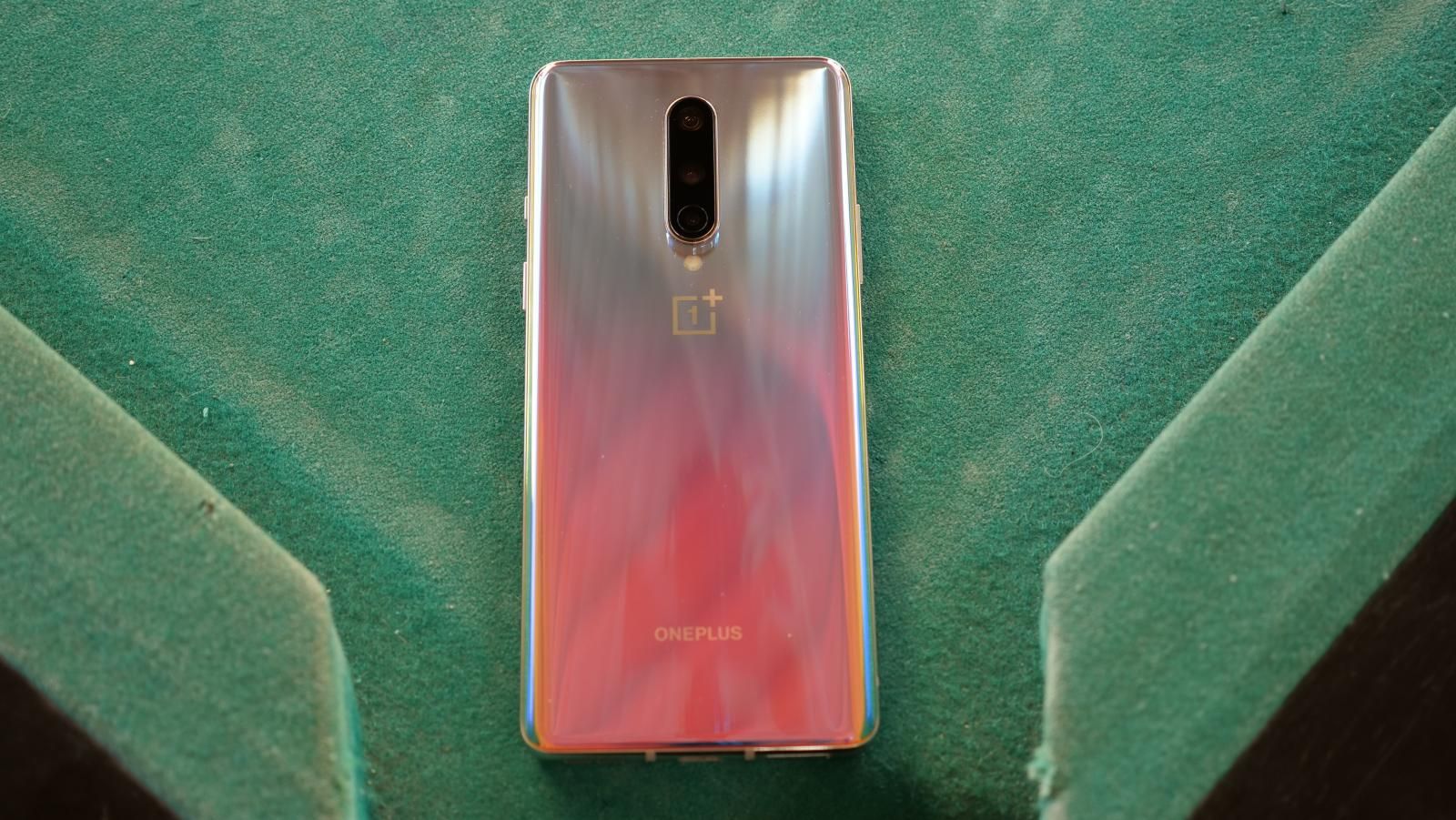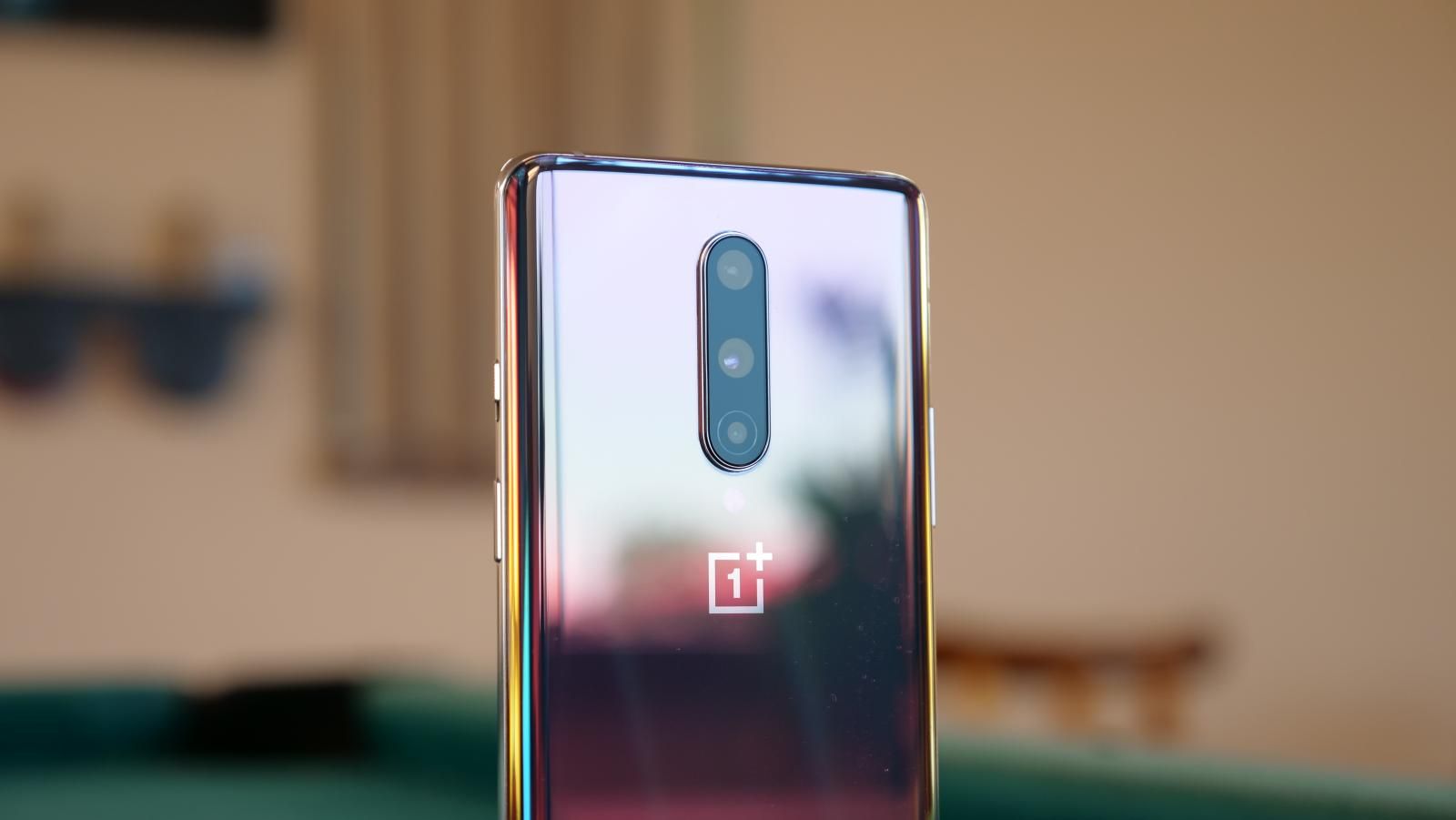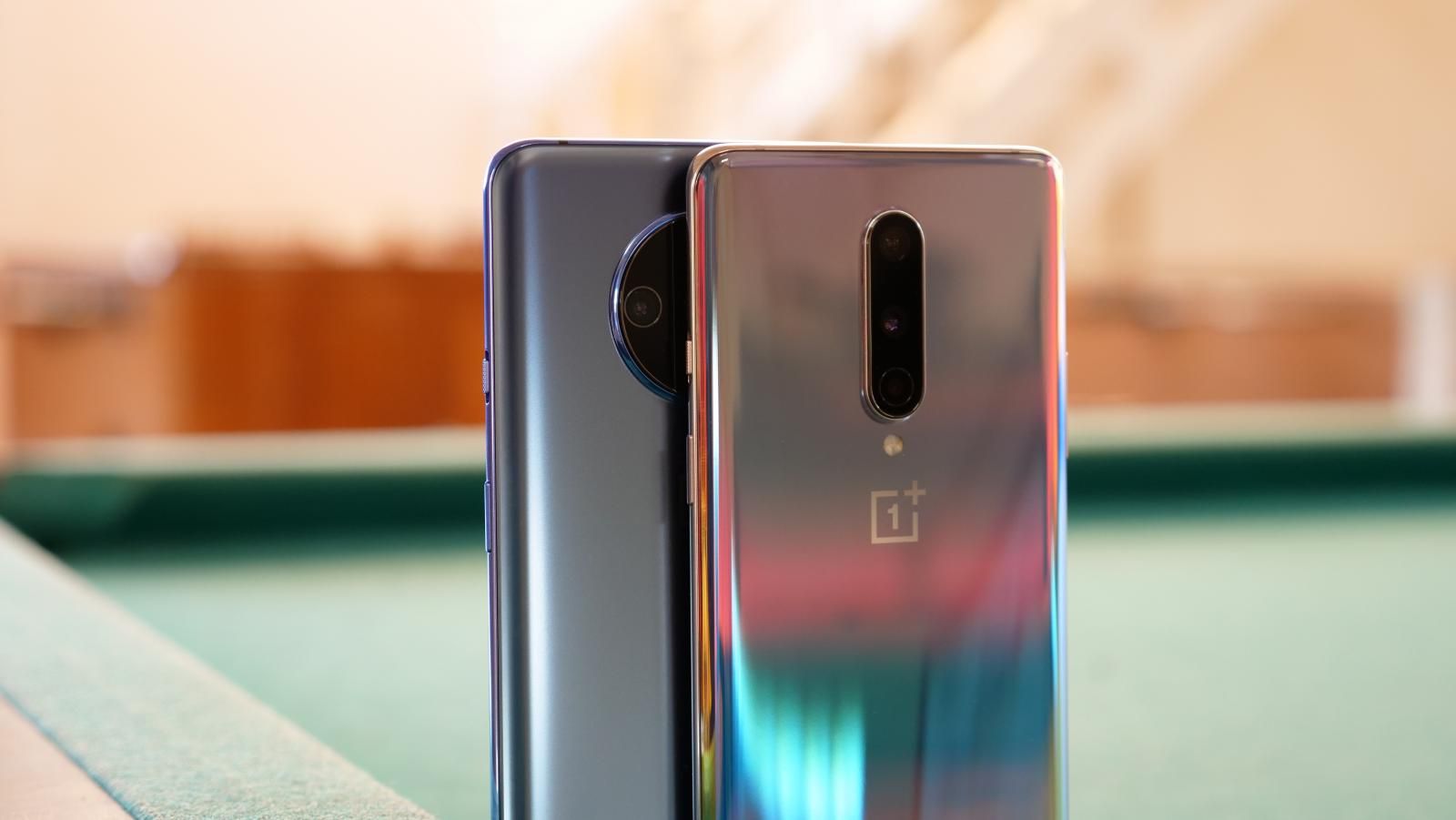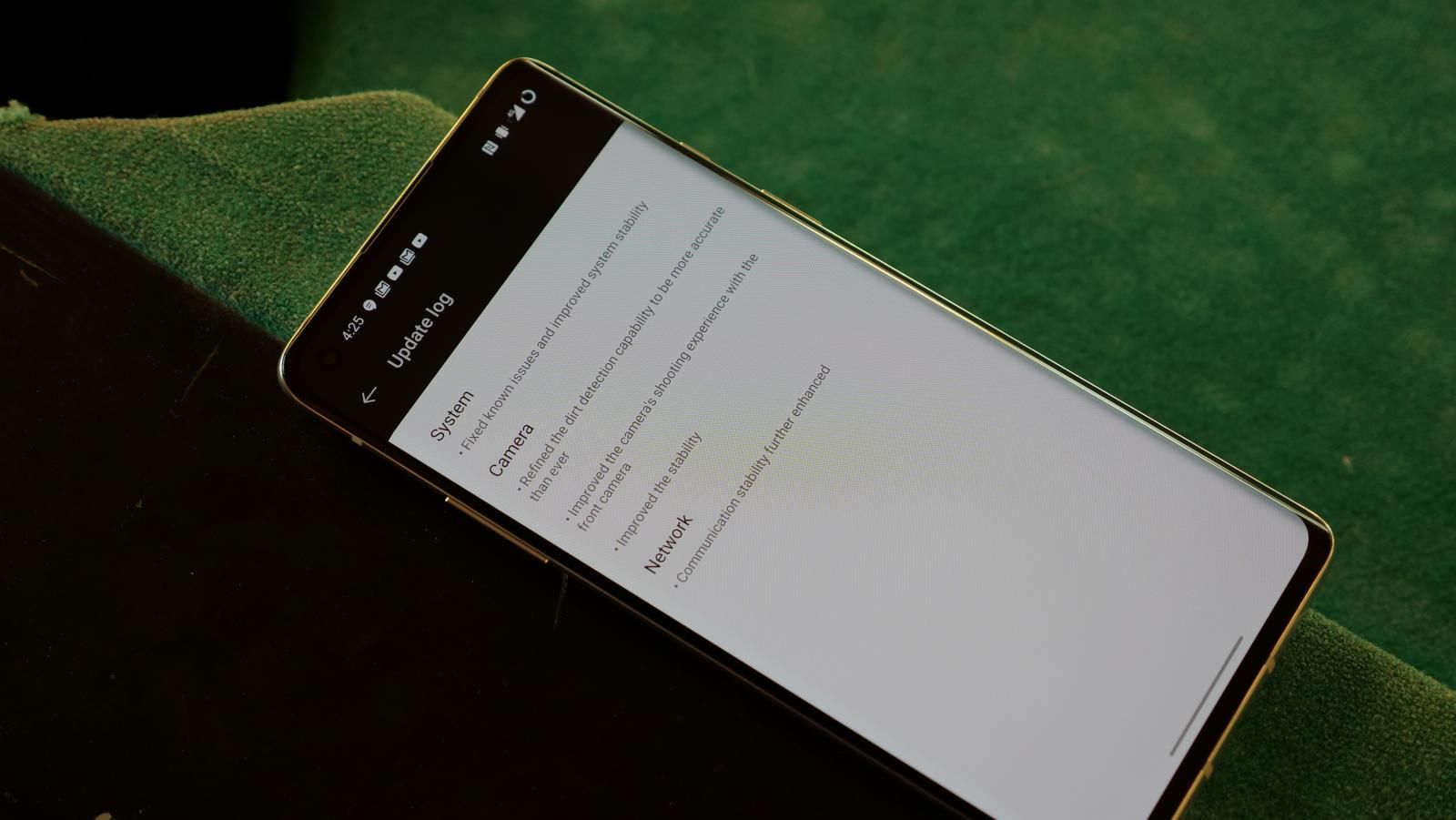I hesitated to review the OnePlus 8 on embargo because the phone just didn’t feel ready. If you watch my comparison against the 8 Pro, the camera was not even living up to the 7T. But you know what they say: good things come to those who wait, and right after that video was done we received an update the next day addressing the camera, and right after my comparison against the iPhone 11, we received another, and then I got another software update last night. It’s time for our full review of the OnePlus 8.
For those of you new to OnePlus, I’d like to call this one of the brands responsible less expensive iPhones. Fight me all you want on that premise, but come on, Apple decided to announce the iPhone SE the day after this OnePlus 8 became official, and it’s really a no-brainer as to why. OnePlus has been selling flagship specs at midrange prices for years, so all it took was a couple of US launches, plus an extra carrier deal for brands to wake up.
The biggest question is, should you care? Even if brands are noticing, in the past recommending OnePlus was easy because of the price gap. The OnePlus 8 by contrast sees the biggest jump in price difference from its predecessor at $100, meaning the exact same $699 that you can pay for an iPhone 11, and even the Galaxy S10. My short answer is that you care, because the value proposition is substantially different. Let me start this video by telling you what I like most about this phone, which focuses on that.
Like
Visually you’d say there’s really not much different, but I’d disagree. Some of my favorite devices of 2019 were the Galaxy S10 and Note 10, and its as if OnePlus used them for inspiration. If you see it from the front and with the screen of, you’d swear it’s an S10. And the smudge-heavy compact disk look of the Note 10 can be seen on this Interstellar Glow back. Now, for me the S10 was more about how impossibly light such a large phone felt, and that permeates to the OnePlus 8. Somehow this phone is about the same height of the 7T, but is then 2mm narrower and a hair thinner, all while being 10 grams lighter, and also including a battery that’s 12% larger.
I mean, if we wanna keep talking efficiency, let’s discuss the main reason for the price hike. The main reason why the OnePlus 8 shouldn’t even be compared to anything from 2019, is because this is a 5G phone. And sure, I know some of us reviewers like to downplay the importance of 5G today, but that won’t last long. It’s picking up fairly quickly, and I know most consumers don’t upgrade phones every year. When given a choice between investing in the technology of the future vs the technology of the past for the same $699, the value proposition is entirely different. The OnePlus 8 supports sub-6 on T-Mobile, and is also the smallest phone that I know of that’s capable of mmWave if you go Verizon. Call it overkill today all you want, but you’ll thank me later.
Another value benefit of going OnePlus is that the rest of the internals are hard to compete with. We have the latest Qualcomm Snapdragon 865, enough of the fastest flavor of RAM and storage in the industry, the latest Wi-Fi and Bluetooth Standard, Dual SIM capabilities if you go unlocked, and a wired charging technology that’ll take you from zero to 50% in 22 minutes included in the box.
§Flip to the front, and can I just say this is the first time I’ve truly loved a OnePlus display. In the past they were good, but not great. Either too dim, or the colors were just not right. Obviously if you want QuadHD+ or 120hz you’ll have to get the Pro variant, but Full HD+ and 90hz won’t be easy to find in this price range. At 6.55 inches and 20:9 aspect ratio, this Fluid AMOLED follows a nearly identical footprint to the 7T, but pushes screen to body ratio a bit further to create this bezel less impression. I know some won’t be fans of the curves but because this phone is not what I’d call too large to hold, I haven’t had much of a need for palm rejection techniques. Colors are vibrant, it pushes beyond 1000 nits so you’ll be fine in direct sunlight, and the content consumption experience is fantastic thanks to dual firing speakers.
And then last but not least, there’s the software powering the show. Android is plagued with the Cliche that stock Android is better than anything else, which I wish were reflected by sales figures on the Google Pixel. OxygenOS is what I’d like to call “more than stock” because it shares the visual elements, while adding a ton of usual elements.
The first thing you’ll notice is just how fluid it is, which is a blend of the company’s legacy approach, and the 90hz refresh rate in action, so long if you choose to enable it, because yeah, this is the UI of choices. If you like the new Android gestures, they’re here. If you prefer the old three button navigations, they’re here. If you like the Google Assistant it’s here natively, but you can also choose Amazon’s Alexa for a blend of both, where you can set one to the gesture and the other to the power button. Want gestures to launch specific apps or control your music while the screen is off, that’s also here. Want facial recognition or a fingerprint scanner on the display, or both.. they’re here, and I now love how notifications are only visible on the lock screen if your face is detected. Those fans of the three-way mute slider can even pick what each of these modes does to tailor more specific behavior.
And then there are the added perks that are unique to OnePlus like ZenMode to keep you off your phone for a bit, Gaming features for those that don’t want to be interrupted and want a boost in performance, and my favorite: Reading Mode, which is self explanatory.
I’d call OxygenOS the most complete and thought-out version of how stock Android should behave, not just because of its UI, but also because of endurance. Generation after generation, OnePlus has not disappointed in providing you with all day battery performance, with or without a large battery pack. If you’re worried that this is the smaller version of the 8 Pro, don’t. This phone is just as much of a champ.
Mixed
By now I’m sure you’re asking, well what’s the catch? And of course there is. This is still far from being the perfect phone, and corners are usually cut to make this such an affordable 5G phone.
There are a few things I’m mixed about and the first is water resistance, but there’s a huge asterisk on this section. My review unit is unlocked, so I do know there is no IP rating, meaning the most I can tell you is the usual OnePlus jargon that it’s splash proof, but if you dig through a spec sheet on T-Mobile or Verizon, you’ll notice those variants are IP68. I already confirmed with OnePlus that this is the case, so if a certification is important to you, get a carrier variant.
Second is wireless charging. At a time when even the $399 iPhone SE includes the feature, it’s really hard to justify why a phone this expensive doesn’t include it. Even if it didn’t bring the fast standard of the Pro variant, some sort of option would be welcomed.
Third is the camera performance. If you watch the progression of how this set of cameras has behaved between my last two comparisons, you’ll understand why I decided to delay this review. It first started as being ok for the price, to good enough to compete with the iPhone 11 in certain elements, to fine, now I like it.
My biggest complaint is all the promise on the spec sheet. You hear numbers like 48 megapixels on the primary with a crop approach to the 2X telephoto, a 16 megapixel ultrawide and a 2 megapixel macro and you’re like.. wow, it’s gotta be great, but in real world performance it’s more of an A-, which is far better than the B I would’ve given it weeks ago.
During the day you’ll notice far more consistency than on my first couple of videos. Colors are not as warm as your typical iPhone, but I’d call these more consistent to what my eye is seeing on this hazy day. Having an ultra-wide is always an added bonus for a more epic shot, and I’d call the 2X digital crop from the primary to be good enough for lossless street photography at least during the day. Just don’t try zooming in any further from it as the results start getting choppy and washed out.
Sadly, the claims for a triple camera system are sadly to laugh about with this macro. It’s not the same to add macro capabilities to a standard lens like on the 7t, than to pretend that you’ll get decent results with a 2 megapixel shooter. There is no detail, colors are washed out, like absolutely everything about it is just unusable, and this motto of overpromising and under delivering extends to other features.
For example, let’s talk nightscape. This phone claims to have night capabilities from the ultra-wide, which not even the iPhone 11 Pro claims, but the results are no better than not using it at all. Why offer something you won’t do well? Just stick to the primary camera and you’ll like the results, where results are very detailed if a tad cool for my taste.
Oddly I prefer the portrait photos from this phone over the Pro because I find them to be more natural. Most phones create this odd fake separation between subjects, where the 8 is so basic it actually passes as something a real camera would do.
What I’m sadly not a fan of are selfies and selfie portraits. Once again, it makes me wonder why this company claims so many megapixels from the sensor if the results are so washed out. I mean dynamic range is fairly decent, but the lack of detail just gets to me.
And then when we jump to video, I’d give this phone more of a B- or worse if it wasn’t for the fact that most Android phones will perform nearly the same. This phone is capable of 4K at 60 fps from the primary camera with some really fantastic stabilization, but it comes at a cost. Android just can’t seem to shake off the warping and moire produced by the codec, and this phone is no exception. You can switch focal lengths and dynamic range is fairly decent, but nothing I would trust to use in any of my videos as a b-camera.
And then it’s just unfortunate that OnePlus phones still can’t provide selfie video at 4K resolution. The chip supports it, the megapixels are here, and yet we get these washed out results matched with a crop that almost seems like if they just ported the feature from the OnePlus 6 and never really improved any code on it.
Conclusion
To conclude let me just say that I’m really happy I waited to do this review. I spent the first few days being so underwhelmed, and now it seems like there’s more of a cohesive story behind this phone. The OnePlus 8 is not designed to be a flagship, there’s the OnePlus 8 Pro for those of you looking for an uncompromising set of features, and a price tag to match.
The OnePlus 8 speaks more to the mainstream consumer that’s looking for a phone that’s too good for the price, or as we’d like to call, a flagship killer. Those debating that it’s priced like, say an iPhone 11, have it all wrong. You have to stop living in the past. Every 2020 flagship has 5G, and the reason why the OnePlus 8 matters is because it’s giving you a future-proof phone, for those same $699. Maybe a little analogy would be that if you were told today that every car next year has to go electric, then would you buy a gas car today if you’re not used to upgrading every year?
The OnePlus 8 has proven to not just be a great smartphone for the present, but also a good investment for the future. The start was a bit rocky, but if three software updates in less than a month are any indication, it’s only proof that OnePlus is really invested in improving this product for the long run. I have no problem recommending it as one of the best 5G solutions for those of you looking for an inexpensive way to jump onboard.

